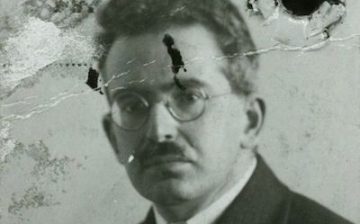Samantha Rose Hill at the LARB:
 When Benjamin was released from the Clos St. Joseph internment camp in Nevers in the spring of 1940, he returned to Paris for a brief period before fleeing to Lourdes around June 14, en route to Marseilles. It was during this time that he wrote what would become his final work, “Theses on the Philosophy of History,” or as it is also translated, “On the Concept of History.”
When Benjamin was released from the Clos St. Joseph internment camp in Nevers in the spring of 1940, he returned to Paris for a brief period before fleeing to Lourdes around June 14, en route to Marseilles. It was during this time that he wrote what would become his final work, “Theses on the Philosophy of History,” or as it is also translated, “On the Concept of History.”
The “Theses,” a collection of philosophical fragments on historicism and historical materialism, were originally written on the backs of colorful envelopes — green, yellow, orange, blue, cream. The cramped passages in tiny script illustrate the conditions of exile: he is saving space because he is short on paper. As a text, the “Theses” marry Benjamin’s interests in Marxism and theology, reflecting on temporality and the possibility of a weak messianism to interrupt the flow of empty homogeneous, capitalist time. The most famous fragment, which lies at the heart of the work, was inspired by Paul Klee’s painting Angelus Novus, which Benjamin purchased in 1921, and which inspired a birthday gift from Scholem: a poem titled “Greetings from the Angelus on July 15.”
more here.
